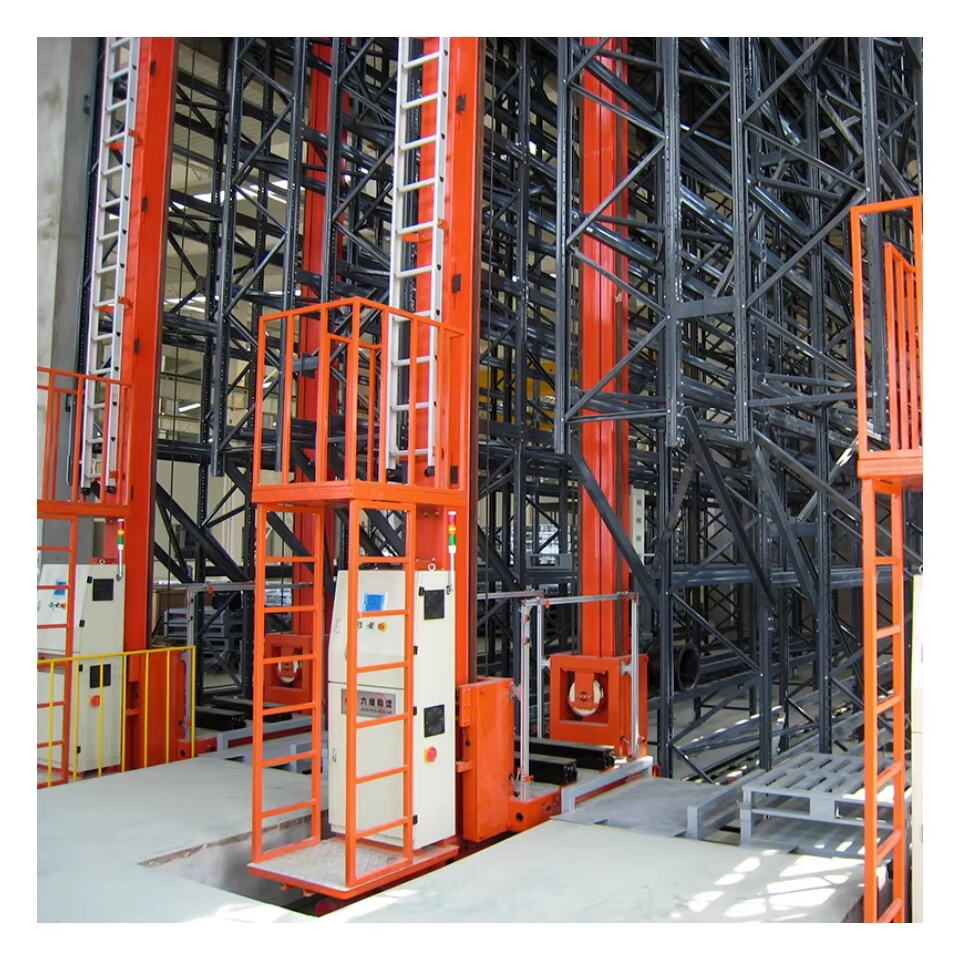Introduction to ASRS Warehouses in Modern Logistics
Automated Storage and Retrieval Systems (ASRS) are revolutionizing logistics by enhancing operational efficiency and reducing overhead costs. ASRS warehouses utilize advanced technologies to automate the retrieval and storage of goods, significantly contributing to optimizing space and improving accuracy in inventory management. Over the years, ASRS technology has evolved, driven by the need for automation and efficiency in handling larger volumes of inventory.
The modern iteration of ASRS includes integration with artificial intelligence and robotics, making it a cornerstone in warehouse automation. This evolution has allowed companies across sectors like retail and e-commerce to meet the surging demand for faster and more efficient logistics processes. Ultimately, ASRS warehouses play a pivotal role in enhancing supply chain efficiency and effectiveness. By minimizing manual labor and streamlining operations, these systems enable businesses to handle a higher volume of goods effectively, paving the way for a more responsive and flexible supply chain ecosystem.
Boosting Operational Efficiency Through ASRS Technology
Accelerated Storage and Retrieval Processes
Automated Storage and Retrieval Systems (ASRS) significantly expedite storage and retrieval processes compared to traditional manual systems. By leveraging advanced robotics and algorithms, ASRS minimizes the time spent locating and moving products within a warehouse. Recent case studies have demonstrated substantial time savings, with some reports indicating reductions of up to 50% in handling times. For instance, in a study of an e-commerce warehouse, the implementation of ASRS reduced picking time by over 40%, drastically improving order fulfillment speed. Algorithms play a crucial role in these improvements by optimizing storage paths and selecting the most efficient routes, which not only increases retrieval efficiency but also enhances overall operational fluidity.
Reducing Labor Costs with Automated Systems
The introduction of ASRS brings direct cost benefits through reduced labor requirements. With automation handling routine tasks, companies can lower their reliance on a large workforce, trimming associated costs significantly. Beyond just reducing headcount, ASRS contributes to workplace safety by minimizing manual handling, which decreases the risk of injuries. Industry reports suggest that companies adopting ASRS have witnessed labor cost reductions of 20% or more, alongside an improved safety record, as automation reduces exposure to hazardous manual tasks. These savings are vital in maintaining competitive pricing and efficiency in the logistics sector.
Integration with AI and Robotics for Continuous Improvement
The integration of ASRS with AI and robotics offers a transformative edge in logistics, driving continuous improvement. This synergy allows ASRS systems to learn from past operations and refine their processes, leading to enhanced accuracy and speed over time. Successful implementations, such as those seen in automotive supply chains, show how robotics paired with AI analytics can adapt to varying loads and optimize throughput. Future trends suggest that AI will further augment ASRS capabilities by enabling predictive maintenance and real-time decision-making, ensuring systems remain at peak performance while reducing downtime and operational costs. By embracing this integration, businesses can stay ahead in a rapidly evolving logistics landscape.
Maximizing Storage Space with ASRS Solutions
Vertical Storage Configurations for Space Optimization
Vertical space optimization in warehouses is crucial for maximizing storage capacity, and ASRS technology plays a pivotal role in achieving this. Utilizing vertical space effectively allows facilities to store more inventory without expanding their physical footprint, which is especially beneficial in urban environments where real estate is costly. ASRS solutions offer various vertical storage configurations, such as carousels and crane-based systems, which organize goods in multiple tiers. For instance, crane-operated systems can retrieve items from shelves as high as forty meters, significantly enhancing storage potential. Statistics indicate that ASRS implementation can lead to a 40% space savings, making it an appealing choice for warehouses keen on optimizing available space.
High-Density Storage Capabilities
ASRS technologies provide high-density storage capabilities, integral to improving inventory management. High-density storage enables a greater volume of products to be stored within the same square footage, effectively reducing the warehouse footprint. This is achieved through the compact integration of storage modules and precision in automated handling. Such systems are beneficial for inventory management, ensuring quicker access to items and reducing retrieval times. A case study at Manhattan Beer Distributors, which incorporated a high-density ASRS, showed a drastic reduction in footprint and allowed for expanded inventory capacity, demonstrating the profound impact of high-density systems on space utilization and operational efficiency.
Dynamic Slotting and Inventory Rotation Techniques
Dynamic slotting, a feature of ASRS, revolutionizes inventory management compared to traditional static methods. Unlike static systems that assign fixed storage positions, dynamic slotting adapts to shifting inventory demands by reassigning slots based on item movement frequency. This adaptability is crucial for preventing inventory obsolescence and enhancing rotation efficiency. Using ASRS, companies can improve inventory turnover rates; for example, a logistics firm utilizing dynamic slotting reported a 30% improvement in turnover. By facilitating timely inventory rotation and allocating space based on current needs, ASRS ensures optimal use of storage spaces and timely access to critical items.
Enhancing Inventory Accuracy and Error Reduction
Minimizing Human Error Through Automation
Automated Storage and Retrieval Systems (ASRS) significantly minimize human error in warehouse operations. By replacing manual handling with automated processes, ASRS reduces errors commonly associated with human intervention, such as picking or counting mistakes. According to an industry report by Stifted in 2024, automated inventory tracking and cycle counting can achieve a 99.9% bin accuracy. Such error reduction does not only improve inventory precision but also enhances customer satisfaction and supply chain reliability. When fewer mistakes occur, supply chain partners and end customers benefit from more consistent and reliable service, ultimately boosting overall enterprise performance.
Real-Time Inventory Tracking and Reporting
Real-time inventory tracking, enabled by ASRS, is crucial for effective inventory management. This technology allows businesses to gain instant insights into stock levels and location, ensuring that decisions are based on current information. Key components such as IoT-enabled sensors and sophisticated software platforms facilitate accurate tracking and reporting, offering a comprehensive view of inventory at all times. With accurate inventory data, companies can make informed strategic decisions, such as optimizing stock levels, improving order fulfillment rates, and minimizing costly overstock situations. Real-time insights lead to superior inventory management and more agile business operations.
Cost-Effectiveness and Financial Benefits of ASRS Implementation
Long-Term Savings from Automated Operations
Automated Storage and Retrieval Systems (ASRS) provide considerable long-term financial benefits for warehouses through significant cost savings. While the initial investment can be substantial, various examples in the industry demonstrate how the automation of operations translates into reduced labor costs, improved efficiency, and minimized errors, leading to overall profitability enhancements. A study by Research and Markets anticipates the ASRS market to grow at a CAGR of 8.9%, illustrating its value to industries like e-commerce and logistics. As manual handling becomes more costly and less efficient, automation not only enhances operational workflows but also contributes to optimizing real estate usage by reducing necessary square footage.
ROI Analysis for Warehouse Automation Investments
Calculating the Return on Investment (ROI) for ASRS implementations is crucial for assessing the financial feasibility of warehouse automation projects. ROI analysis involves evaluating not just upfront costs but also the long-term benefits achievable through enhanced productivity and operational efficiency. Industry benchmarks often highlight positive ROI results, with some warehouses noticing significant improvements in labor and space utilization. Understanding and measuring ROI is essential in the modernization strategy of any warehouse. For example, according to Mordor Intelligence, automation has helped warehouses address labor challenges and improve efficiency, validating the investment through tangible performance enhancements. Therefore, embedding ROI measurement in strategic planning helps justify automation investments and informs resource allocation decisions effectively.
Conclusion: The Transformative Impact of ASRS on Warehousing
The implementation of Automated Storage and Retrieval Systems (ASRS) has significantly transformed the logistics and warehousing industries. Key benefits include enhanced inventory management, increased operational efficiency, and substantial cost savings. ASRS technology reduces manual labor, optimizes storage space, and minimizes errors, effectively streamlining operations. The significant improvement in these areas not only boosts productivity but also reinforces the bottom line.
Looking ahead, future trends in ASRS technology point towards greater integration with artificial intelligence and machine learning. This evolution will allow even more sophisticated inventory management and predictive analytics. As ASRS systems become central to warehouse operations, they are expected to become more adaptable and intelligent, further enhancing their role in efficient supply chain management.
Businesses are encouraged to consider ASRS as a strategic asset for gaining a competitive edge in logistics. With the increasing demands of modern warehousing, adopting advanced ASRS technology can facilitate better customer service, optimize operations, and ensure scalable growth. Implementing ASRS is not just an option but a crucial step towards sustainable warehouse modernization, propelling businesses into the future of warehousing.
FAQ
What are Automated Storage and Retrieval Systems (ASRS)?
Automated Storage and Retrieval Systems (ASRS) are advanced technological solutions used in warehouses to automatically place and retrieve loads from specified storage locations, improving efficiency and accuracy while reducing labor costs.
How do ASRS systems enhance warehouse efficiency?
ASRS systems enhance warehouse efficiency by automating the retrieval and storage processes, minimizing human error, and reducing retrieval times. They optimize space usage and streamline operations, significantly improving order fulfillment rates and inventory management.
What are the cost benefits of implementing ASRS?
Implementing ASRS can lead to significant cost savings by reducing labor requirements, improving safety, enhancing space utilization, and minimizing errors. Over time, the reduction in operational costs and improvements in productivity typically result in a positive Return on Investment (ROI).
Can ASRS integrate with existing warehouse technologies?
Yes, ASRS can be integrated with various existing warehouse technologies, including warehouse management systems (WMS), artificial intelligence for predictive analytics, and real-time inventory tracking systems, to further enhance overall warehouse productivity and efficiency.
Table of Contents
- Introduction to ASRS Warehouses in Modern Logistics
- Boosting Operational Efficiency Through ASRS Technology
- Maximizing Storage Space with ASRS Solutions
- Enhancing Inventory Accuracy and Error Reduction
- Cost-Effectiveness and Financial Benefits of ASRS Implementation
- Conclusion: The Transformative Impact of ASRS on Warehousing
- FAQ

